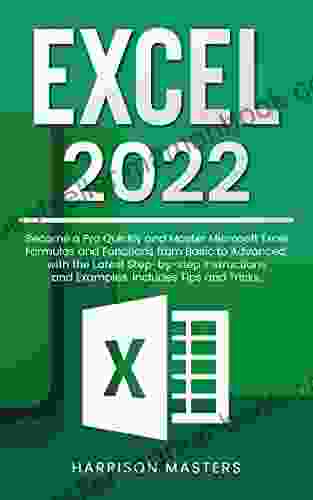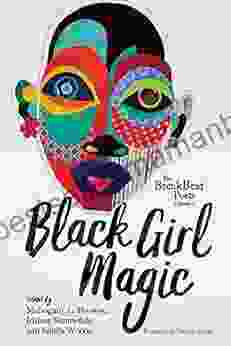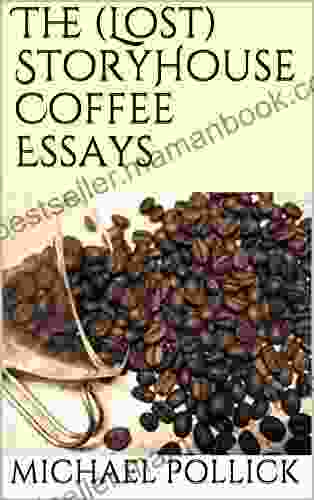Including the Essays, the Allowable Rhyme and Metrical Regularity: An Exploration of Poetic Structure in the Medieval Period

The literary landscape of the Middle Ages witnessed a remarkable blossoming of poetic forms and conventions. Amidst this rich tapestry, the essay genre emerged as a vessel for scholarly and imaginative contemplation. In this article, we will delve into the intriguing relationship between essays, rhyme, and metrical regularity in the medieval period, exploring how these elements contributed to the creation of powerful and evocative literary works.
The essay, as a genre, emerged in the medieval period as a written composition that presented a particular argument or opinion on a specific topic. Often crafted in prose, essays allowed authors to explore complex ideas and engage in intellectual discourse. They provided a platform for scholars and thinkers to share their knowledge, insights, and perspectives.
Rhyme, a fundamental element of poetry, involves the repetition of identical or similar sounds at the end of lines or words. In medieval poetry, rhyme played a significant role in shaping the structure and enhancing the memorability of verse. It created a sense of rhythm and flow, making poems more pleasing to the ear.
4.7 out of 5
| Language | : | English |
| File size | : | 1298 KB |
| Text-to-Speech | : | Enabled |
| Screen Reader | : | Supported |
| Enhanced typesetting | : | Enabled |
| Print length | : | 134 pages |
There were numerous types of rhyme schemes employed by medieval poets. Some of the most common included:
- Perfect rhyme: Words with identical consonant and vowel sounds, such as "love" and "dove."
- Slant rhyme: Words with similar, but not identical sounds, such as "light" and "sight."
- Eye rhyme: Words that appear to rhyme when written but sound different when spoken, such as "love" and "move."
Rhyme served several purposes in medieval poetry. It helped create a sense of unity and coherence within the poem, guiding the reader's eye and ear through the text. It also facilitated memorization, as the repetitive sounds aided recall. Furthermore, rhyme contributed to the aesthetic appeal of the verse, enhancing its musicality and elegance.
Metrical regularity refers to the consistent pattern of stressed and unstressed syllables within a line of poetry. Medieval poets employed a variety of metrical forms to structure their verse, each with its own unique rhythm and cadence. Some of the most frequently used meters included:
- Iambic pentameter: A line composed of ten syllables, alternating between an unstressed syllable and a stressed syllable, such as "The world is too much with us."
- Trochaic octameter: A line composed of eight syllables, alternating between a stressed syllable and an unstressed syllable, such as "Once upon a midnight dreary."
- Anapestic trimeter: A line composed of three units of three syllables each, with the emphasis on the second syllable, such as "And the silken sad uncertain rustling of each purple curtain."
Metrical regularity served several functions in medieval poetry. It provided structure and order to the verse, guiding the reader's perception of rhythm and flow. It also facilitated comprehension, as the predictable patterns made it easier to decipher the words. Furthermore, metrical regularity contributed to the musicality of the poem, lending it a sense of melody and grace.
The medieval period witnessed the convergence of essays, rhyme, and metrical regularity in a unique and compelling manner. Authors recognized the power of these elements to enhance the impact of their literary works.
Essays, which primarily served as vehicles for intellectual exploration, gained a new dimension when combined with rhyme and meter. The rhythmic flow and melodic quality of poetry added an evocative element to scholarly discourse, making the arguments and ideas more engaging and memorable.
Rhyme and meter, while commonly associated with lyric poetry, found their way into essays, enriching the prose with musicality and structural coherence. The repetition of sounds and the predictable rhythm helped to guide the reader through the complex prose, making it easier to follow the author's train of thought.
Furthermore, the interplay of essays, rhyme, and metrical regularity allowed authors to experiment with different modes of expression. By blending the analytical nature of the essay with the artistic sensibilities of poetry, they created a hybrid genre that transcended traditional boundaries. This fusion of forms enabled writers to convey their ideas in a multifaceted and engaging way.
Throughout the medieval period, numerous examples can be found that demonstrate the skillful integration of essays, rhyme, and metrical regularity. One notable figure who excelled in this genre was Geoffrey Chaucer.
"The Canterbury Tales": Chaucer's magnum opus is a collection of tales written in various verse forms, including rhymed couplets and iambic pentameter. Each tale is presented as an essay, exploring themes such as human nature, love, and social commentary.
"The Parlement of Foules": This allegorical essay poem explores the nature of love through a dream vision. Chaucer employs a sophisticated rhyme scheme and metrical regularity to create a captivating and thought-provoking work.
"Troilus and Criseyde": A lengthy verse narrative, "Troilus and Criseyde" tells the tragic love story of two lovers. Chaucer uses iambic pentameter and intricate rhyme schemes to convey the complex emotions and psychological turmoil of the characters.
These are just a few examples of how medieval authors successfully combined the essay form with rhyme and metrical regularity. These literary devices enhanced the impact of their works, creating memorable and engaging pieces that transcended the boundaries of genre.
The inclusion of rhyme and metrical regularity in medieval essays transformed them from mere scholarly treatises into evocative and engaging literary works. By blending the analytical and intellectual qualities of the essay with the musicality and structure of poetry, authors created a hybrid genre that captivated readers and left a lasting legacy in the literary landscape.
The medieval period witnessed a remarkable fusion of form and content, as essays, rhyme, and metrical regularity intersected in a harmonious and compelling way. This interplay of genres paved the way for new modes of expression and contributed to the richness and diversity of medieval literature.
4.7 out of 5
| Language | : | English |
| File size | : | 1298 KB |
| Text-to-Speech | : | Enabled |
| Screen Reader | : | Supported |
| Enhanced typesetting | : | Enabled |
| Print length | : | 134 pages |
Do you want to contribute by writing guest posts on this blog?
Please contact us and send us a resume of previous articles that you have written.
 Top Book
Top Book Novel
Novel Fiction
Fiction Nonfiction
Nonfiction Literature
Literature Paperback
Paperback Hardcover
Hardcover E-book
E-book Audiobook
Audiobook Bestseller
Bestseller Classic
Classic Mystery
Mystery Thriller
Thriller Romance
Romance Fantasy
Fantasy Science Fiction
Science Fiction Biography
Biography Memoir
Memoir Autobiography
Autobiography Poetry
Poetry Drama
Drama Historical Fiction
Historical Fiction Self-help
Self-help Young Adult
Young Adult Childrens Books
Childrens Books Graphic Novel
Graphic Novel Anthology
Anthology Series
Series Encyclopedia
Encyclopedia Reference
Reference Guidebook
Guidebook Textbook
Textbook Workbook
Workbook Journal
Journal Diary
Diary Manuscript
Manuscript Folio
Folio Pulp Fiction
Pulp Fiction Short Stories
Short Stories Fairy Tales
Fairy Tales Fables
Fables Mythology
Mythology Philosophy
Philosophy Religion
Religion Spirituality
Spirituality Essays
Essays Critique
Critique Commentary
Commentary Glossary
Glossary Bibliography
Bibliography Index
Index Table of Contents
Table of Contents Preface
Preface Introduction
Introduction Foreword
Foreword Afterword
Afterword Appendices
Appendices Annotations
Annotations Footnotes
Footnotes Epilogue
Epilogue Prologue
Prologue Douglas Gill
Douglas Gill Kit Norris
Kit Norris Ruchi Singh
Ruchi Singh Nancy Isenberg
Nancy Isenberg J J Cummings
J J Cummings Joshua James
Joshua James Yvon Chouinard
Yvon Chouinard Bree Wolf
Bree Wolf F Lockhaven
F Lockhaven Elin Hilderbrand
Elin Hilderbrand Joseph Heller
Joseph Heller Terry Brooks
Terry Brooks Lea Rawls
Lea Rawls Lanjing Zhou
Lanjing Zhou Joni Toikkanen
Joni Toikkanen Elyn R Saks
Elyn R Saks David Boyle
David Boyle Ash Keller
Ash Keller Pam Johnson Bennett
Pam Johnson Bennett Lily J Adams
Lily J Adams
Light bulbAdvertise smarter! Our strategic ad space ensures maximum exposure. Reserve your spot today!

 Patrick RothfussBecome Pro Quickly: Master Microsoft Excel Formulas and Functions from Basic
Patrick RothfussBecome Pro Quickly: Master Microsoft Excel Formulas and Functions from Basic Lee SimmonsFollow ·2.7k
Lee SimmonsFollow ·2.7k Corbin PowellFollow ·13.1k
Corbin PowellFollow ·13.1k William ShakespeareFollow ·15.3k
William ShakespeareFollow ·15.3k Ernest J. GainesFollow ·18.8k
Ernest J. GainesFollow ·18.8k Rex HayesFollow ·6.7k
Rex HayesFollow ·6.7k Bret MitchellFollow ·4.8k
Bret MitchellFollow ·4.8k Louis HayesFollow ·12.9k
Louis HayesFollow ·12.9k Orson Scott CardFollow ·10.8k
Orson Scott CardFollow ·10.8k

 David Foster Wallace
David Foster WallaceA Comprehensive Journey Through Economic Thought: A Brief...
Economics, the study of...

 Phil Foster
Phil FosterRecipes for Two: Nourish Your Body, Nourish Your...
Cooking and sharing meals together is one of...

 Alexandre Dumas
Alexandre DumasThe Ultimate Monkey Hat: Emery Leeann
If you're an animal lover,...

 Chadwick Powell
Chadwick PowellThe Breakbeat Poets Vol. 4: Black Girl Magic - Unveiling...
In the realm of...

 Dan Brown
Dan BrownAn Emotional and Touching Love Story: A Journey of Love,...
This is a love story that will stay with you...
4.7 out of 5
| Language | : | English |
| File size | : | 1298 KB |
| Text-to-Speech | : | Enabled |
| Screen Reader | : | Supported |
| Enhanced typesetting | : | Enabled |
| Print length | : | 134 pages |












